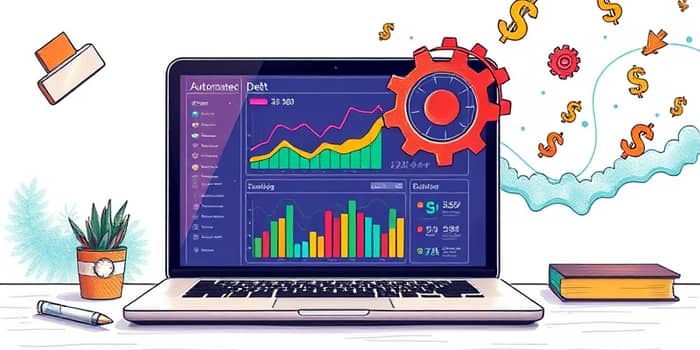
Automation has transformed personal and business finance, offering unprecedented control and efficiency. By adopting automated debt payment solutions, you can rest assured that your obligations are met on time, every time. This comprehensive guide explores the latest tools to help you avoid missed or late payments and achieve financial peace of mind.
Automating debt payments means setting up systems that schedule and execute payments without manual intervention. This practice eliminates the risk of human error and ensures consistent payment schedules.
For individuals, automated payments can boost credit scores and reduce stress. Businesses benefit from optimized cash flow management and freed-up administrative resources. In both cases, the result is a more efficient financial operation and improved relationships with creditors or suppliers.
The consumer debt space has seen significant innovation in 2025, with apps offering advanced strategies and visual progress tracking. Below, we highlight three leading solutions:
ZilchWorks charges a one-time fee of $46.94 and emphasizes robust offline security measures. It delivers a personalized debt reduction plan, secure data storage, and desktop-only access for security-conscious debtors.
Undebt.it costs $12 per year and supports multiple payoff methods like snowball and avalanche. Users can switch strategies at will and enjoy a fully web-based interface that syncs with any device.
Unbury.me is free and appeals to visual learners with color-coded graphs, easy debt calculations, and payoff projections. Its simple interface makes it ideal for beginners seeking clear guidance.
Businesses face more complex challenges when automating debt workflows. They require tools that meet regulatory requirements, handle high volumes, and integrate seamlessly with existing systems. The leading platforms in 2025 deliver comprehensive capabilities:
Agicap CashCollect serves SMBs and cash managers with automated reminders, real-time tracking, and direct bank or ERP integrations. Users report up to 30% fewer non-payments and 50% time savings on receivables management.
Upflow targets growing SMBs by offering payment tracking integrated with CRM systems, collaboration tools for collections teams, and DSO reduction analytics.
Bilendo appeals to mid-market firms with white-label dunning portals, custom reminders, and compliance features for GDPR and PCI standards.
For large enterprises, Invoiced and Billtrust provide global scalability, invoice automation, credit checks, self-service payment portals, and extensive audit trails to ensure regulatory adherence.
Artificial intelligence has become a game-changer in the debt automation landscape. Platforms now employ machine learning to predict delinquency risks, personalize collection outreach, and optimize cash flow effortlessly. End-to-end automation covers everything from invoice generation and follow-ups to payment matching and dispute resolution.
Seamless integration with accounting, ERP, and CRM systems ensures data consistency and real-time reporting. FinanceOps solutions forecast cash inflows and recommend strategic adjustments, helping organizations maintain healthy financial positions.
Automating debt payments is no longer a luxury but a necessity in a fast-paced financial environment. Individuals can benefit from faster debt payoff and improved credit using consumer-focused apps like Undebt.it or Unbury.me. Businesses, meanwhile, can free teams from manual tasks, reduce DSO, and enhance compliance with enterprise platforms such as Agicap CashCollect, Upflow, or Billtrust.
To choose the best tool, start with a free demo or trial, outline your specific requirements, and compare pricing models. Whether you aim to eliminate late fees on a personal credit card or streamline accounts receivable for a multinational corporation, the right automation solution will deliver time savings, cost reductions, and peace of mind in every transaction.
Embrace these technologies today and transform your debt management strategy with precision, efficiency, and confidence.
References













